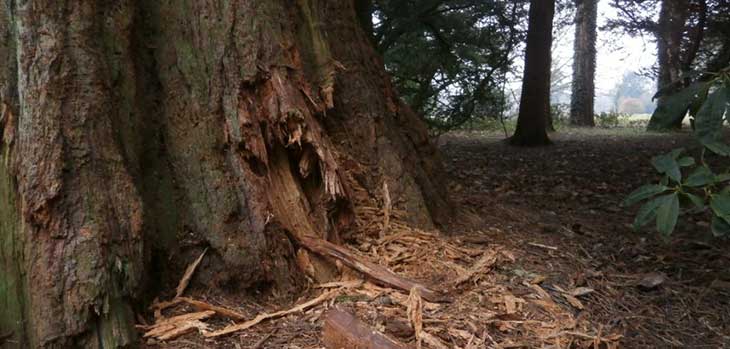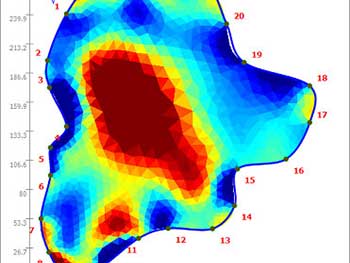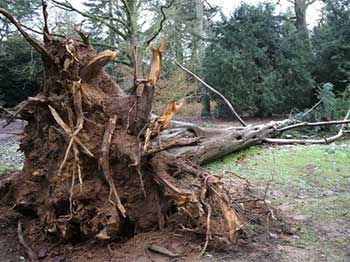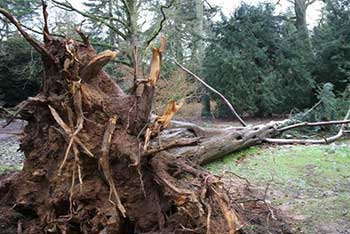Stuck between rot and a hard place…
Deciding when to remove old trees is one of the hardest decisions we have to take here at Westonbirt. All of the arboretum’s trees are regularly inspected for safety reasons and we try to strike the balance between allowing old and valuable trees to remain and visitors’ safety.
As trees reach the end of their lives they tend to go into decline (known as senescence) and as managers we try to care for specimens through this process, for example by gradual crown reduction. However, we can only delay, rather than prevent, the inevitable. Sooner or later we have to say goodbye.
The time has sadly come to fell a magnificent giant redwood (Sequoiadendron giganteum) that has graced Main Drive since the Holford family started their arboretum in the mid-nineteenth century, as its health has been in decline for many years. We have taken the difficult decision to remove it following lots of close monitoring and some recent investigations. Although the decline of this specimen is fairly obvious, it can be tricky to get a clear picture as to what is actually happening inside a tree’s trunk.

To help us in this instance we recently arranged a specialist test on this tree with the Treetronic system, which uses electric current/voltage to investigate the internal properties of the tree. The result of the measurement is a two-dimensional map of the electrical impedance (EI) of the tree. Importantly, each tree species has a typical impedance (water/moisture) distribution, and to properly analyse the EI results, the operator should have a good working knowledge of how the subject tree species grows and how the water/moisture distribution may vary in different seasons.

As suspected, our results indicated a central column of dysfunction/decay, which corroborates the external characteristics. The resulting diagram for this tree revealed a high degree of decay (red areas), which matches the outer visual evidence. Based on past experience, we can assume that the decay also extends into the root plate, which would adversely affect the tree's stability.

On a brighter note, we do have over 50 other giant redwood specimens throughout the arboretum, and we also hope to collect more wild seed later this year from western USA.
Finally, if a reminder were ever needed that our trees do not live forever and that we do need to manage older specimens in particular, then just a short distance away on Loop Walk you can still see the uprooted remains of a large Nootka cypress (Xanthocyparis nootkatensis).
This tree was being monitored closely due to decay in the base, but unfortunately fell during high winds over the Christmas period before we had chance to remove it.
